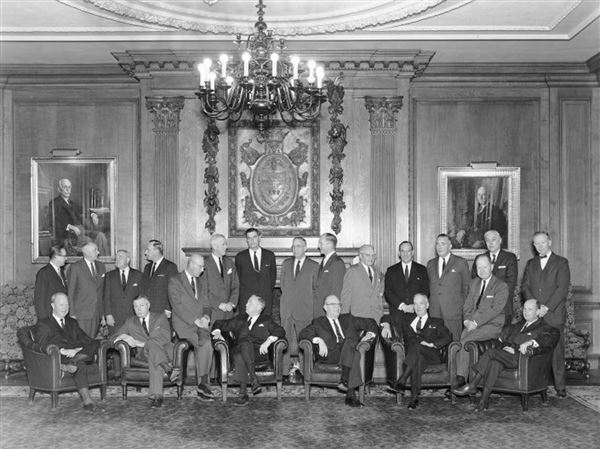UPDATE: Ebb and Flow are no more. The two spacecraft of NASA's Grail mission crashed on the Moon at about 5:28 p.m. Eastern time, about 30 seconds apart, one of the few times that cheers and claps have been heard in the control room to celebrate the loss of a spacecraft.
NASA also announced it had named the impact sites, into a lunar mountain, after Sally Ride, the first American woman in space.
The crashes brought the yearlong mission to map the Moon's gravity field to an end. The twin spacecraft, named Ebb and Flow by NASA scientists, were running low on maneuvering fuel, and NASA wanted to make sure that they did not accidentally destroy a historical site like one of the Apollo landings -- unlikely, but possible.
NASA broadcast live commentary of the impacts on its Web site, but provided no live video showing the probes hitting the Moon.
In my article last week about the impending demise of Ebb and Flow, I noted, "Unfortunately, since the action will happen on the dark side of the Moon, there will be nothing for earthlings to see."
About a gazillion people, including Robert Kirshner, a Harvard astronomy professor, wrote in to ask, "Didn't you mean to write 'far side' and not 'dark side'?"
The more annoyed wrote: "Dark Side of the Moon??? Come on now. You know that is not correct! You completely blew a potential teaching moment, to educate the public that the **FAR** side of the Moon is **NOT** dark! Instead you perpetuated yet another scientific misconception. No wonder we are facing a crisis in science literacy in the U.S. The New York Times can and should do better!"
Except I really meant, "dark side" -- the side of the Moon facing away from the Sun.
What was confusing to many was a remembered tidbit about the Moon, that there is always one face towards Earth, and the other always out of view, and they presumed that the crashes will be on the far side and therefore blocked from view.
If that were the case, "far side" would be correct.
During the news conference last week, Maria T. Zuber, the principal investigator, said the probes would be crashing into a "non-sunlit" part of the surface. I translated that into a more common word: dark.
Plus, it was a nice allusion to Pink Floyd.
But because there is a permanent near side and a permanent far side, many interpreted "dark side" as "permanently dark side." As the readers pointed out, as the Moon rotates, the Sun rises over the entire surface during the course of a monthlong lunar day. That's true. The crash sites, which are actually on the near side of the Moon, are not always dark, but what is relevant is that the crash sites will be dark at 5:28 p.m. The crashes will not be visible because the area is dark, not because they will be out of the line of sight.
In a couple of weeks, it will come back into sunlight, and it's at that point that NASA's Lunar Reconnaissance Orbiter will attempt to photograph the gouges left by the two Grail spacecraft.
This is easy to see if you sketch out three circles, for the Sun, Earth and Moon. Then it's instantly clear that the dark side -- the side facing away from the Sun -- is different from the far side, the side facing away from the Earth.
Or just remember: Pink Floyd has nothing to do with Gary Larson.
Meanwhile, astronomers should come up with a term to describe the side of the Moon facing away from the sun. (Make your suggestions in the comments.)
A smaller number of readers wondered why the spacecraft will crash when the maneuvering fuel runs out. The Moon has no atmosphere and therefore there is no friction to slow them down. But the Moon's gravity is uneven and the orbit is not perfectly circular. Without periodic course adjustments, it will become more chaotic and elliptical, and the ellipse will intersect with the surface of the Moon -- i.e., crash.
















